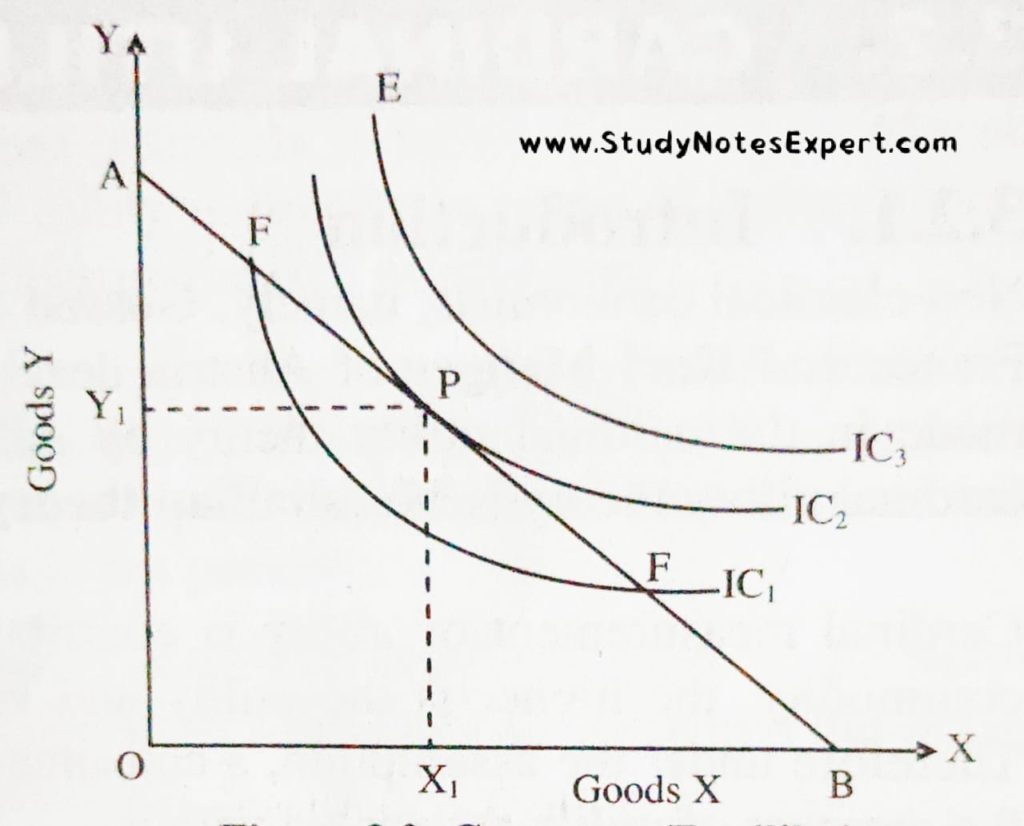If the Consumer does not intend to make any changes a in his purchases of goods then he is said to be equilibrium position. If the given income and who is basket of goods that provides him maximum satisfaction. Thus, a consumer is said to be in equilibrium position by purchasing that combination of goods that is to his budgetary constraints and on the highest indifference curve.
Definition of Consumer Equilibrium
According to Scitovesky, “A consumer is in equilibrium when he regards his actual behaviour as the best possible under the circumstances feels no urge to change his behaviour as long as circumstances remain unchanged”.
According to Marshall, “If a person has a thing which he can put to several uses, he will distribute it among these uses in such a way that it has the same marginal utility in all.”
Assumptions of Consumer Equilibrium
- Logical action of the consumer.
- Cardinal number like 1,2,3,4, etc., are the measures of utility.
- Consumer is completely knowledgeable.
- Marginal utility of money remains constant.
- The price of the commodity and the income of the Goods Y consumer are fixed.
- There is no change in the tastes of the consumer.
Conditions of Consumer Equilibrium
For the consumer to be in equilibrium, two conditions are explained here.
- At the point of equilibrium on and MRSXY = PX/PY price line must be tangent to the indifference curve.
- At the point of equilibrium indifference curve must be convex to the origin, i.e., MRS, y is diminished.

Explanation of Consumer’s Equilibrium
The price line AB shows all the possible combinations of goods X and Y that can be purchased by the consumer at given prices and with his given money income. He cannot purchase any combinations on IC3 as these combinations are beyond the power of the consumer to purchase. But any combination of two goods that are on the price line AB can be purchased by an imaginary consumer. The price line AB being tangent to the indifference curve IC2 the slope of the budget lines(PX/PY) and the slope of the indifference curve IC2 are equal at equilibrium point P.
Therefore, MRSxy = PX/PY
He will substitute Y for X to equalise MRSxy and Px/Py. Equilibrium position of the consumer changes as the income of the consumer or price of a commodity change accordingly.
Define Consumer Equilibrium?
Consumer equilibrium is when they have maximized their utility given their budget constraint. The consumer is in equilibrium where their marginal utility per dollar spent on each good is equal.
What are the Three Conditions for Consumer Equilibrium?
The three conditions for consumer equilibrium are:
1. The consumer is maximizing utility.
2. The consumer is budget-constrained.
3. All prices are known.
How do You Derive Consumer Equilibrium?
Consumer equilibrium derives after solving for the quantity of a good or service a consumer is willing and able to consume. The consumer’s budget constraint helps find the amount of the good or service the consumer can afford. The consumer’s utility function allows finding the quantity of the goods or services the consumer is willing to consume.

